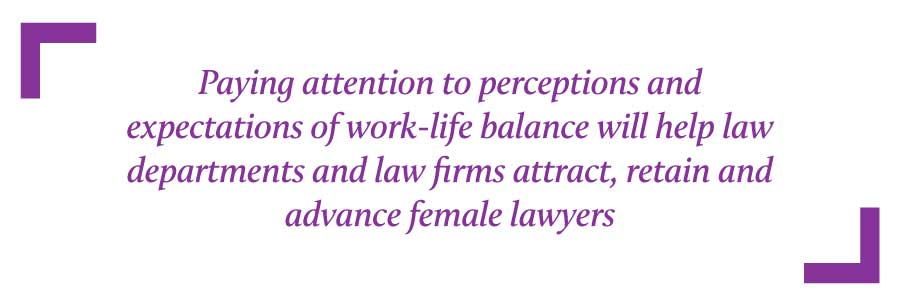Women are rapidly becoming more visible in-house across Australia and New Zealand, but what challenges remain?
Tanya Khan, the vice president and managing director for Australia and Asia-Pacific at the Association of Corporate Counsel (ACC), works with organizations to encourage gender equality in-house. The ACC’s initiatives include the development of a Diversity and Inclusion Charter for in-house teams, measuring and reporting on gender distinction, and celebrating companies that have achieved high female representation across all levels in-house.
“When I started in this profession over 20 years ago, I commenced in private practice. After a couple of years I moved into a top-tier law firm. I thought I had made it; that I was well positioned to head down the prized partnership path.

Vice president and managing director
ACC Australia and Asia-Pacific
It soon became clear that those at the end of the path were exclusively male, working hours that prohibited them from enjoying their family or social lives. Success was determined by hours billed and revenue generated. I had no female partners to model, and realized that if partnership looked like this, it was not a future I wanted.
I found my place in the profession in-house. The general counsel in my first in-house role was a strategic and formidable woman who gave me the opportunity to revise my career aspirations and renew my love of the law. Fast-forward 15 years, and our industry has been transformed through commoditization, specialization, innovation and technology. However, certain hallmarks persist.
The ANZ [Australia and New Zealand] in-house legal sector continues to outperform corporate Australia and the broader legal profession when it comes to gender diversity. There is now a 50% chance that corporate legal departments in ANZ are led by women, up from 38% in 2012. However, men are still more likely to lead in-house teams at publicly-listed organizations, where there is a higher turnover and more employees.
Meanwhile, women comprise only 16% of equity partners at Australian firms, and 33% of non-equity partners, while only 22.7% of women are represented on ASX200 boards against a 30% target. Only 10.2% of senior counsel at the New South Wales Bar are women.
The gender pay gap remains significant. It is heartening to see some firms and organizations committed to addressing these issues, but the improvements in gender parity since I started my career are simply not sufficient. With women making up 64% of law school graduates across the country, however, future ratios will shift, and they must.
Paying attention to perceptions and expectations of work-life balance will help law departments and law firms attract, retain and advance female lawyers who have the power to positively influence business metrics. Flexibility and a unique approach to individual situations could help retain talented women lawyers, ensuring a vastly different future-state for our law graduates where gender parity is concerned.”
Senior women lawyers across Asia share personal stories of successes, struggles and strategies for a more inclusive legal profession. The following mosaic of personal stories identifies some of the nuances that typify women’s experiences in particular Asian jurisdictions, while also drawing on the wealth of shared experiences that bind them.




























